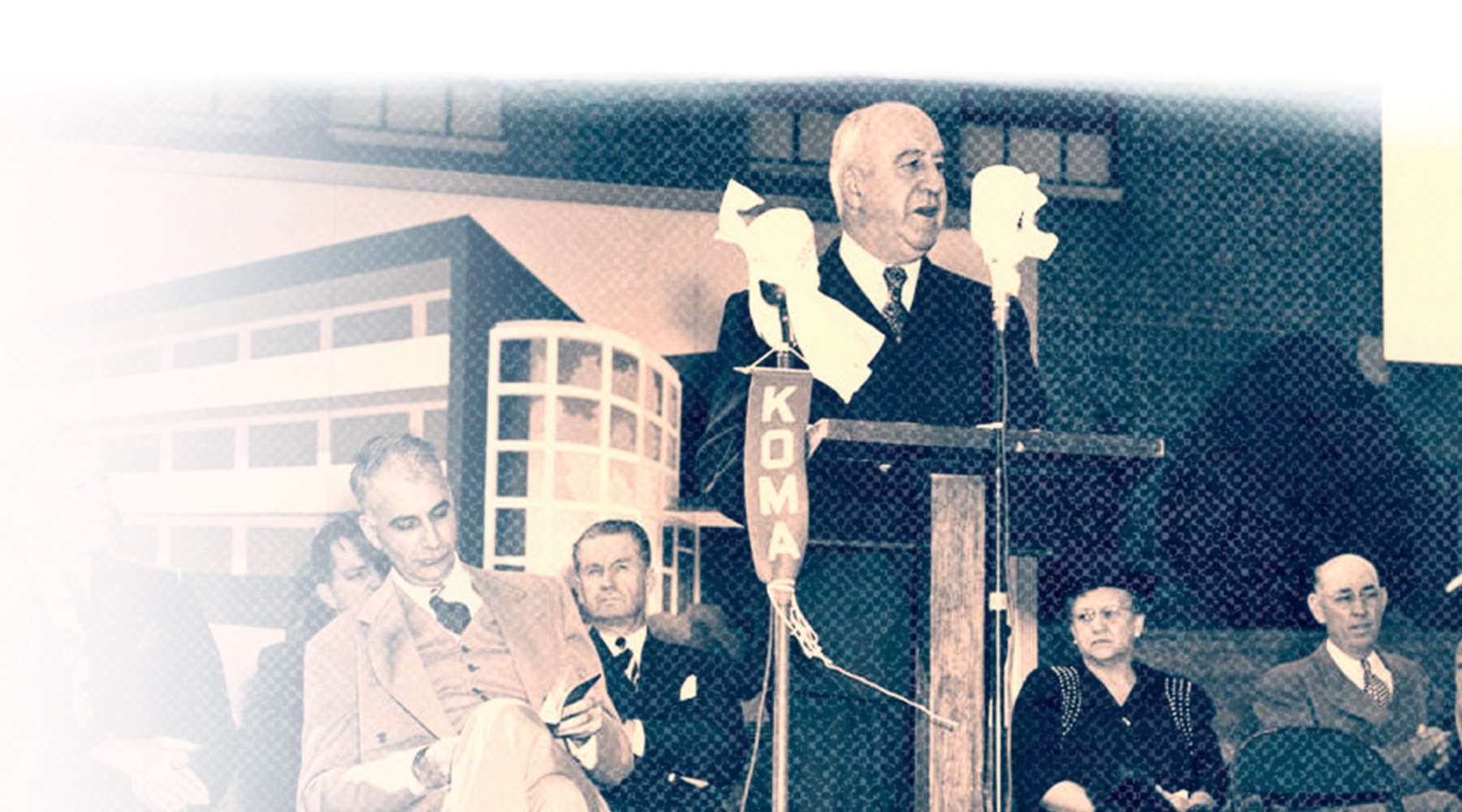When OMRF unveiled its new rooftop wind farm in June, it not only became the first medical research facility anywhere to harness the wind to help power its labs. It also added another chapter in a remarkable story that began more than a century ago with a 14-year-old boy sweeping up coal dust.
J.G. Puterbaugh learned the coal business from the bottom up. In his autobiography, he cites “debts and drought and hard times” for sending him to work for a coal company to help support his mother and siblings. He swept the company office, built fires, shoveled mountains of coal and even served as the company’s bill collector—all for $20 a month.
A year later, he left his job to return to high school, which he completed in two years’ time. With diploma in hand, he returned to the coal business, working his way up the corporate ladder as a traveling salesman. When Puterbaugh’s paycheck rose to $85 a month, he “felt like a millionaire,” he later wrote. By 1907, he actually became one through his ownership of the McAlester Fuel Company, one of the largest distributors and producers of Oklahoma coal.
With rail travel expanding and the advent of coal-powered electricity, Puterbaugh found himself on the cutting edge of energy production. And it made him a fortune.
Puterbaugh always looked ahead, trying to anticipate the next wave in energy sources and consumer needs. So it seems fitting that the foundation bearing his name provided funds that made OMRF’s new wind turbines possible. “Even a hundred years ago, Mr. Puterbaugh understood the value of sustainable energy,” says Oklahoma Supreme Court Chief Justice Steven Taylor, who serves as chairman of The Puterbaugh Foundation.
“When we heard about OMRF’s plan to employ the wind to power its new research building, we pledged our support for it.” The foundation ultimately donated $500,000 toward the turbines, which cost OMRF a total of $819,000 to acquire and install. According to various news sources, the 18 turbines make OMRF’s the largest rooftop wind farm anywhere.
“Mr. Puterbaugh would have loved the idea of using his coal money to purchase wind turbines,” says Taylor. “Especially for a groundbreaking project like this one.” Puterbaugh was also one of the first to give significant financial support to OMRF. He joined the board of directors when OMRF existed only on paper and served as its second volunteer president from 1947 until 1950.
“Mr. Puterbaugh helped OMRF open its doors more than 60 years ago,” Taylor says. “It’s a partnership that we hope keeps powering discoveries for decades to come.”



